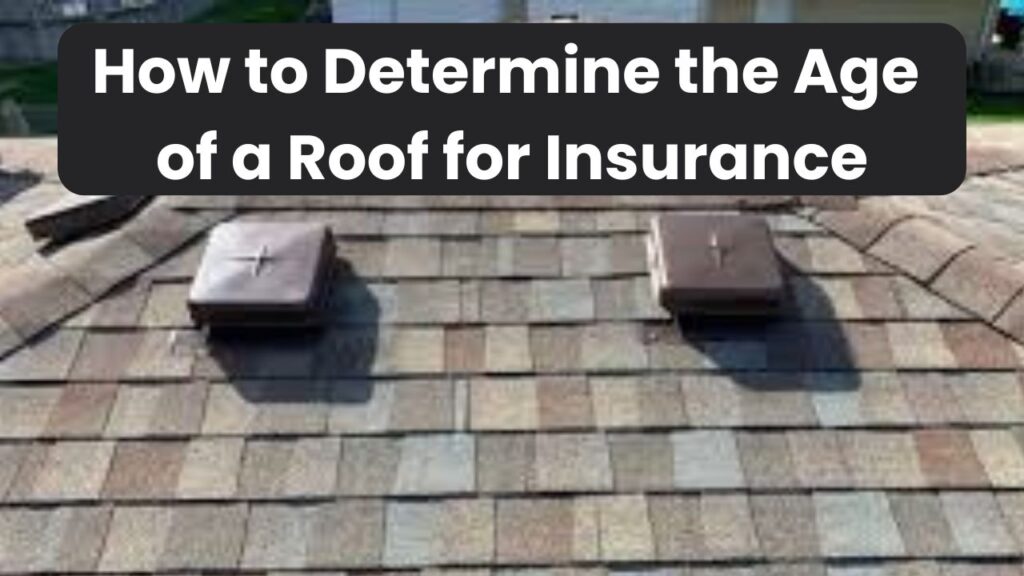Understanding the age of a roof is crucial when dealing with insurance matters. Knowing the roof’s age helps in assessing risks, determining premiums, and ensuring adequate coverage in case of damage. In this blog post, we will explore various methods to ascertain the age of a roof and why it matters for insurance purposes.
Why Knowing the Roof’s Age Matters
The age of a roof can significantly influence an insurance policy. Insurance companies often require this information to evaluate the likelihood of claims and what kinds of coverage are appropriate. Older roofs may require higher premiums or may not be covered under standard policies.
Impacts on Insurance Premiums
- Risk Assessment: Older roofs present higher risks for leaks or severe damage.
- Premium Adjustments: Insurers may increase premiums for roofs nearing the end of their lifespan.
- Coverage Limits: There might be exclusions for certain types of damage if the roof is over a particular age.
Policy Requirements
Insurance providers often specify terms related to roof age in their policies. Understanding these clauses can prevent future disputes and ensure compliance.
Methods to Identify Roof Age
Checking the roof’s age requires a combination of physical assessment and historical data gathering. The following methods are common practices:
Visual Inspection
- Shingle Condition: Look for curling, cracking, or missing shingles.
- Granule Loss: Significant granule erosion suggests aging.
- Moss and Algae: Heavy presence may indicate an older roof.
Reviewing Home Records
- Construction Documents: Check permits or contracts from the original construction or last replacement.
- Previous Owner Records: Contact prior owners for maintenance logs or replacement dates.
- Inspection Reports: Refer to any home inspection done during purchase.
Consulting Roof Professionals
Hiring a roofing expert provides an accurate assessment:
- Expert Evaluation: Professionals can estimate age based on wear patterns.
- Life Expectancy Charts: Compare roof materials against industry standards for lifespan.
Roof Materials and Lifespan
The type of materials used in your roof’s construction will often determine how long it is expected to last. Here’s a quick guide:
| Material | Expected Lifespan |
|---|---|
| Asphalt Shingles | 15-30 years |
| Wood Shingles | 20-25 years |
| Metal Roofing | 40-70 years |
| Clay Tiles | 50-100 years |
| Slate Tiles | 75-200 years |
Knowing the material can guide you toward the expected roof age range.
Contacting the Manufacturer
If the roof’s original materials can be identified, reaching out to the manufacturer may help. They could have records relating to the specific product lines used.
- Serial Numbers: Found on some components, offering insight into production dates.
- Warranty Information: Some manufacturers provide warranties that can indicate installation timeframes.
Technology and Roofing Age
Innovative tools can assist in identifying the age or condition of a roof:
- Satellite Imagery: Services like Google Earth can provide historical images of property changes.
- Drones: Allow for close inspections without physical access, particularly useful for hard-to-reach places.
- Roofing Software: Programs designed to model roof conditions and estimate ages based on data inputs.
Documenting and Reporting Roof Age
Once you determine the roof’s age, accurate documentation is vital:
- Create a Detailed Report: Include findings from inspections and consultations.
- Photographic Evidence: Take clear photos documenting the current condition and any indicators of age.
- Submit to Insurers: Provide insurance companies with all relevant documentation.
Knowing how to assess the age of a roof for insurance purposes not only helps in securing the right policy but also empowers homeowners with knowledge about their property. By combining visual inspections, records analysis, expert evaluation, and technology, the task becomes more straightforward and can lead to better insurance outcomes. Stay informed and proactive to ensure that your roof remains a valuable asset, duly protected under your insurance plan.
Regular Roof Maintenance and Its Importance
Maintaining your roof regularly is essential for prolonging its lifespan and ensuring it remains in optimal condition. Routine checks and maintenance can prevent minor issues from evolving into significant problems, which can affect insurance coverage and lead to costly repairs. Here’s a deeper look at why regular roof maintenance matters and how it can be effectively managed.
Importance of Regular Inspections
Conducting regular roof inspections helps in spotting wear and tear early.
- Prevention of Damage: Identifying problems like leaks or damaged shingles early prevents extensive damage.
- Cost Savings: Regular maintenance avoids expensive, large-scale repairs by addressing minor issues promptly.
- Insurance Eligibility: Well-maintained roofs are more likely to qualify for comprehensive insurance coverage.
Seasonal Maintenance Tips
Different seasons bring varied challenges to a roof:
- Spring and Summer: Check for any winter damage and clear debris from the gutters to prevent water damage.
- Fall Preparation: Remove leaves and ensure the roof is ready for snow with appropriate insulation and drainage.
- Winter Checks: Inspect for ice dam formation and clear snow to minimize weight stress on the roof structure.
Hiring Professional Roofers
While DIY maintenance can help with basic upkeep, professional roofers offer a precise assessment and maintenance service:
- Comprehensive Inspections: Experts can detect issues an untrained eye might miss.
- Expert Repairs: Access to specialty tools and materials ensures correct and long-lasting repairs.
- Professional Advice: Guidance on necessary upgrades or preventive measures suited for your climate and roofing material.
Benefits of Roof Maintenance Plans
Considering a structured roof maintenance plan can benefit homeowners in multiple ways:
- Scheduled Care: Regular, planned inspections, and maintenance timetables ensure consistent care.
- Record Keeping: Detailed logging of maintenance which assists in proving good upkeep to insurers.
- Cost Locks: Fixed pricing for maintenance over the plan’s duration can offer significant cost savings.
Understanding Insurance Implications
Insurance providers value and may require evidence of continual roof maintenance:
- Policy Premium Reductions: Demonstrates due diligence and proper upkeep, which can lead to reduced premiums.
- Claim Approvals: Ensures greater likelihood of straightforward claim approvals in case of damages.
- Coverage Extensions: Some policies offer extended coverage for homeowners with a proven track record of regular maintenance.
Incorporating these practices as part of your home care strategy not only supports the long-term health of your roof but also positions you favorably with insurers. Roof maintenance is an investment that guards against unforeseen circumstances and ensures that your home remains both comfortable and compliant with insurance standards.



